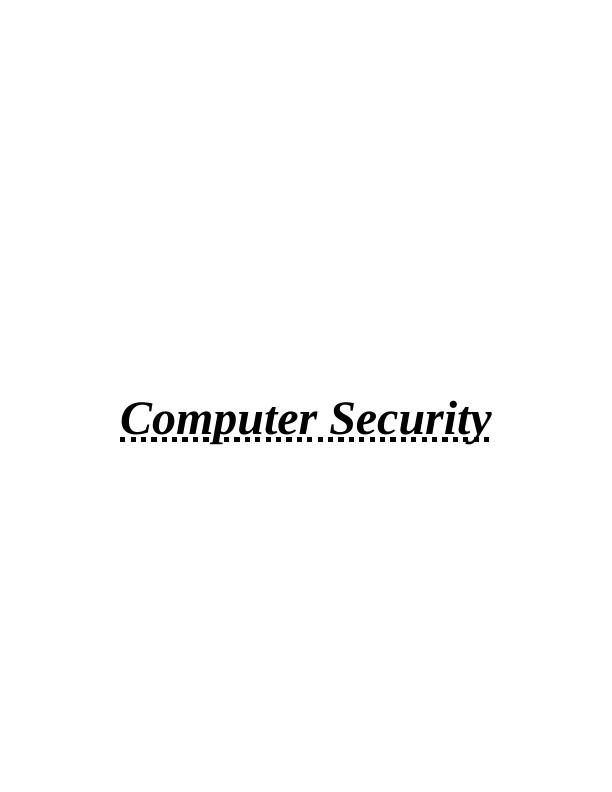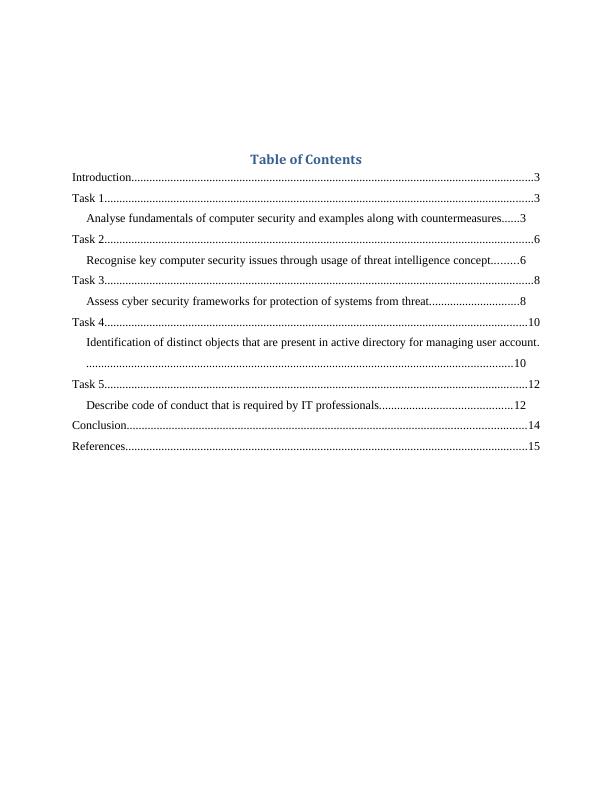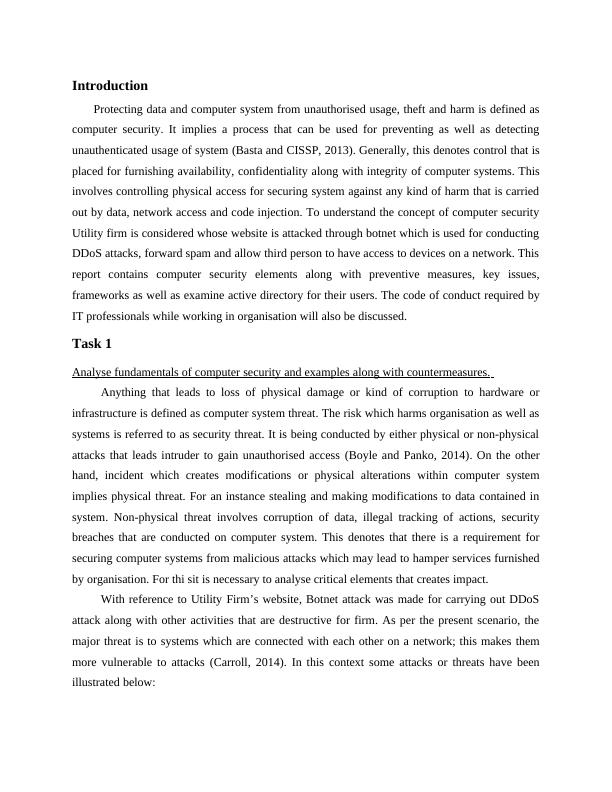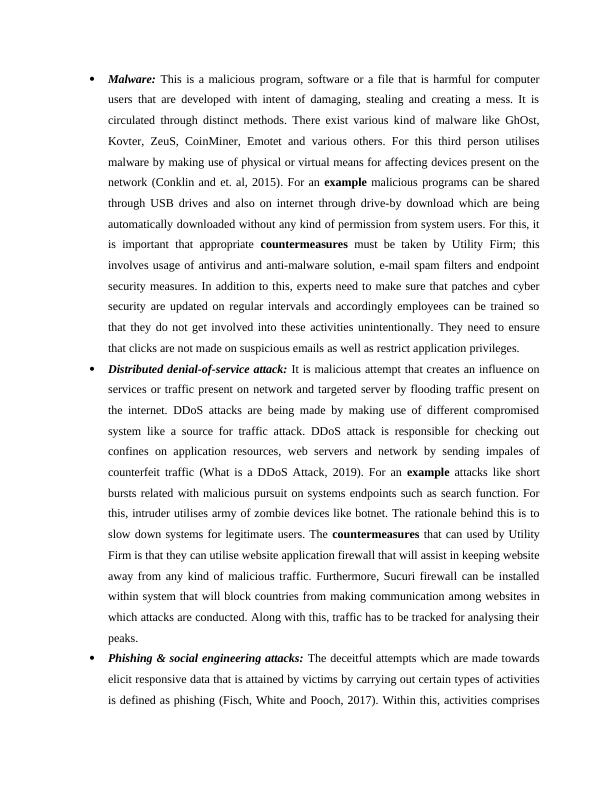Computer Security: Fundamentals, Examples, and Countermeasures
15 Pages5240 Words98 Views
Added on 2023-01-12
About This Document
This document provides an overview of computer security, including its fundamentals, examples of threats, and countermeasures to protect systems. It also discusses key issues in computer security and explores different cyber security frameworks. The document is relevant for anyone interested in understanding and implementing effective computer security measures.
Computer Security: Fundamentals, Examples, and Countermeasures
Added on 2023-01-12
ShareRelated Documents
End of preview
Want to access all the pages? Upload your documents or become a member.
Computer Security: Elements, Issues, and Frameworks
|15
|5037
|1
IT Security: Types of Risks, Organizational Procedures, Impact of Firewall Configuration, Implementation of DMZ, Static IP and NAT
|18
|1181
|61
Importance of Cyber Security in Protecting Against Cyber Attacks
|26
|8270
|85
MIT141559 Botnet Analysis and Detection System Literature Review
|5
|1190
|91
Cyber Attacks: Types, Recent Incidents, Motivations, and Ransomware
|5
|1791
|347
Information Security Assignment Sample (pdf)
|10
|3084
|33




